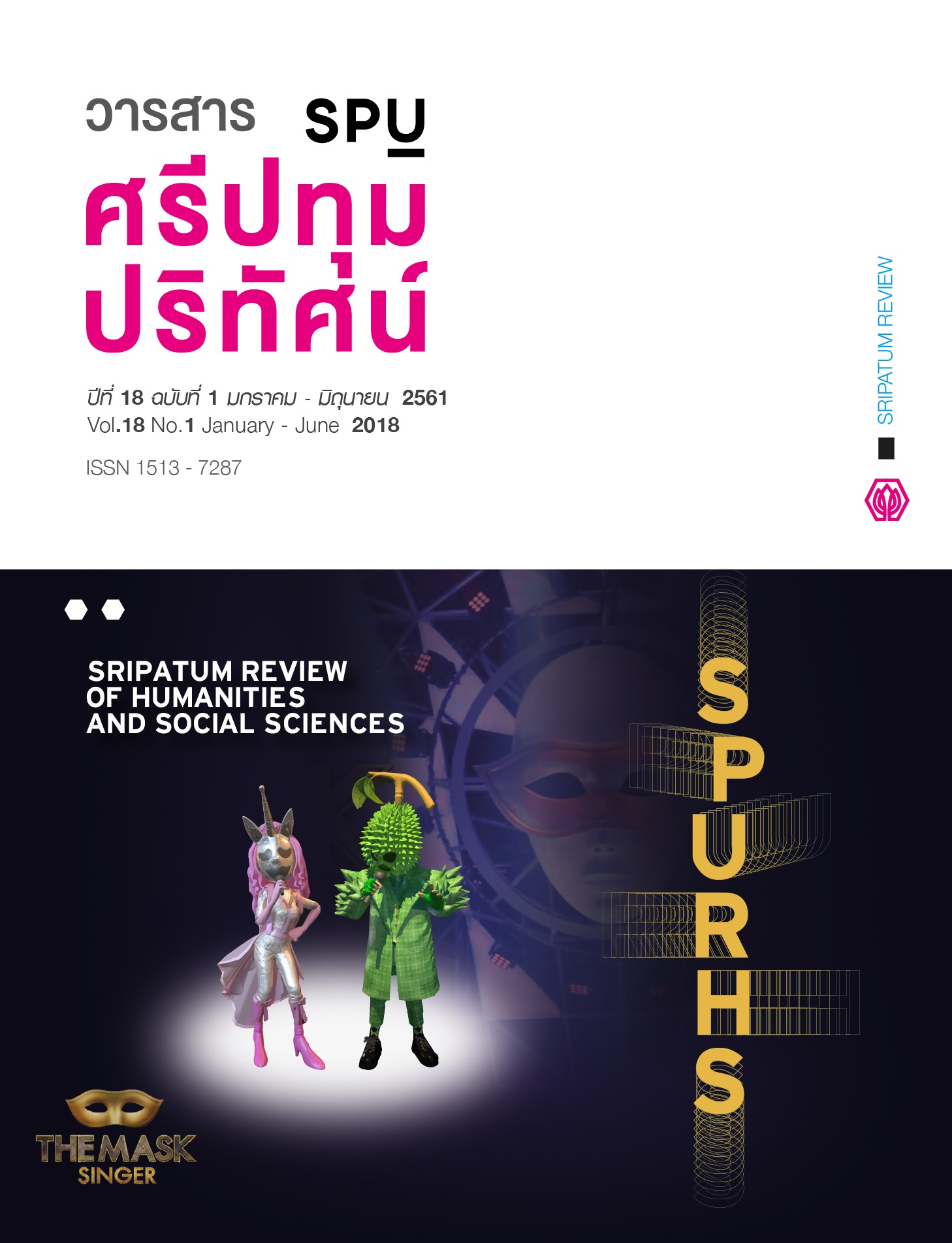A COMPARATIVE STUDY OF EDUCATIONAL MANAGEMENT IN THAILAND AND IN OTHER ASEAN COUNTRIES
Main Article Content
Abstract
The purposes of this study were to synthesize and to compare educational management of
Thailand with those of other ASEAN countries. The qualitative research method was employed in this study. Data were collected from 30 documents comprising reports, research studies and articles that were published during the past five years, and from interviewing five educational experts. The em-ployed research instruments were a data recording form and a semi-structure interview form. Data were analyzed with content analysis and synthesis matrix. The results were as follows: (1) Thailand and other ASEAN countries shared common visions in the following areas: striving to provide a high quality human resource development, building a knowledge-based society, providing life-long learn-ing, professional development, and global education development. In comparing Thai educational administration with those of other ASEAN countries, it was found that Thailand should have vision that accommodate the difference of educational institutions and should determine a variety of key perfor-mance indicators that vary from institution to institution depending on their functions and mandate. In addition, Thailand educational management should promote knowledge constructivism and patriotism. (2) Regarding the mechanism for educational management, it was found that Thailand and other ASEAN countries shared common visions in the development of quality of instructors and quality of graduates to meet the needs of the labor market, the financial reform for mobilization of educational institutions, the quality improvement of the programs and development of standard framework at the national level, the mechanism for the use of information technology for dissemination and share in educational management, and the promotion of cooperation in education at the regional level. In comparing Thai educational administration with those of other ASEAN countries, it was found that Thailand should group or classify universities into types for more clearly determination of the mecha-nism for operation of educational management. (3) Regarding the participation of each sector in ed-ucational management, it was found that Thailand and other ASEAN countries allowed the private sector to participate in educational management. In comparing Thai educational administration with those of other ASEAN countries, it was found that Thailand had clearly determine the roles of the pri-vate sector in the plan of educational management; but in actual practice the carrying out of roles was still not clear. (4) Regarding the development and problem-solving of educational management through research, no shared evidence was found for both Thailand and other ASEAN countries. (5) Regarding the aspect of facilitators and supports for educational management, the following concur-rences existed both in Thailand and in other ASEAN countries: the provision and improvement of basic information and ICT infrastructure for educational management, the recruitment of more faculty members to meet the demand of an increase in student enrollment, the provision and acquisition of adequate financial resources for educational management, the provision of more scholarships, and the provision of inclusiveness and opportunities for equal access to education for all. In comparing Thai educational administration with those of other ASEAN countries, it was found that Thailand allo-cated a higher proportion of the budget for educational development than those allocated for other areas of development in order to develop the infrastructure of education and other aspects of educa-tion, but no measures had been put in place to monitor and assess the outcome resulting from such budget allocation and spending. Furthermore, it was found that higher education institutions varied in their supports for staff members with expertise in educational management.
Article Details
1. กองบรรณาธิการสงวนสิทธิ์ในการพิจารณาและตัดสินการตีพิมพ์บทความในวารสาร
2. บทความทุกเรื่องจะได้รับการตรวจสอบทางวิชาการโดยผู้ทรงคุณวุฒิ แต่ข้อความและเนื้อหาในบทความที่ตีพิมพ์เป็นความรับผิดชอบของผู้เขียนแต่เพียงผู้เดียว มิใช่ความคิดเห็นและความรับผิดชอบของมหาวิทยาลัยศรีปทุม
3. การคัดลอกอ้างอิงต้องดำเนินการตามการปฏิบัติในหมู่นักวิชาการโดยทั่วไป และสอดคล้องกับกฎหมายที่เกี่ยวข้อง
References
Chansina, B. (2 November 2016) Advisor, Edu-cation and Cultural Affairs. Interview.
Lertpaithoonpan, W. (21 September 2016). Vice Chairman, Professional & Organizational Development Network of Thailand Higher Education. Interview.
National Education Act, B.E. 2542. (1999). 1999. “National Education Act, B.E. 2542. (1999) (No. 3), B.E. 2553 (2010)”. Ac-cessed on May 30, 2016.
Office of the Education Commission. 2013. “The 11th Higher Education Development Plan (2012-2016)”. Accessed on May 23, 2016 .
Office of the Educational Council. 2006. “Com-parative Research in Education reform in ASEAN countries”. Bangkok: Office of the Educational Council.
Office of the Educational Council. 2007. “The decentralization of education in the United States”. Bangkok: Office of the Educational Council.
Petchroj, L. (19 September 2016). Director, Master of Education Program, Rajapruk University. Interview.
Petchroj, L. 2013. “Strategies for Higher Educa-tion Management of Thai Private Educa-tional Institutions toward ASEAN Commu-nity”. Rajapruk University: Nonthaburi.
Polsaram, P. (28 September 2016). Vice Dean for Planning, Faculty of Education, Chulalongkorn University. Interview.
Ratakul, P. 2012. “ASEAN STORY”. Higher Edu-cational Journal. April 2012: 7-11.
Thaima, W. and other. 2015. “Strategies for De-veloping the Educational Quality for the Institutions of higher Education in Thailand for ASEAN Students”. In Proc. 2015 APHEIT Conf., 2015, pp.66-80.
Wongboonsin, P. (13 September 2016). Execu-tive Deputy Director, ASEAN Studies Cen-tre, Chulalongkorn University. Interview.
Wongvesetkul, T. 2014. "Unraveling the secrets of creating Korean in Asian”. Accessed on May 31, 2016.


